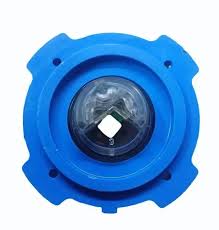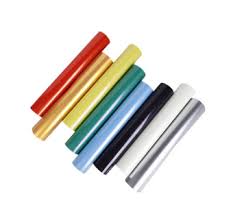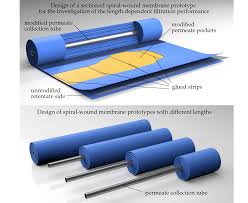MARKET OVERVIEW:
Global Hydrophilic Tape (Waterstop) market is estimated to reach $925.4 Million by 2031; growing at a CAGR of 6.2% from 2024 to 2031.
The Global Hydrophilic Tape (Waterstop) Market is a crucial part of the construction industry, offering specialized materials to prevent water infiltration in concrete structures. These tapes expand when exposed to water, making them essential for maintaining integrity in construction projects. Known as waterstops, they are widely used in joints and weak points in concrete to seal them from water completely. The market for hydrophilic tapes is growing due to the increasing demand for durable waterproofing solutions, especially in applications like tunnels and water treatment facilities. Advances in material science have led to more efficient and reliable hydrophilic tapes that can adapt to different environments.
Manufacturers are investing in research and development to produce tapes with excellent adhesion, flexibility, and resistance to chemicals and environmental factors. Regulatory standards and building codes are emphasizing effective waterproofing, driving the need for quality hydrophilic tapes. The market trend is shifting towards eco-friendly materials to meet sustainability goals in construction. Companies are focusing on product innovation and collaborations to expand their market share and reach a wider customer base, especially in emerging economies with growing construction activities. The future of the hydrophilic tape market looks promising, with continued growth driven by innovation, sustainability, and changing regulatory frameworks.

GROWTH FACTORS
Hydrophilic tapes, also known as waterstops, are set to grow rapidly worldwide due to the increasing need for effective water management in construction projects. These tapes, which expand in water, provide reliable solutions for preventing water infiltration in concrete structures.
Environmental sustainability is driving the market forward, as the demand for eco-friendly solutions is high. However, challenges such as the initial high cost compared to traditional options and the availability of cheaper alternatives may hinder growth.
Despite these challenges, the market has numerous opportunities for growth, such as advancements in manufacturing that can decrease production costs. The push for smart cities and infrastructure projects will create a demand for water management solutions, positioning hydrophilic tapes as a preferred choice. Government initiatives to improve infrastructure will also drive demand for these tapes.
Overall, the future looks promising for the global hydrophilic tape market, with the potential for significant growth driven by technological advancements and increasing demand for sustainable construction materials.

MARKET SEGMENTATION
By Type
The global hydrophilic tape, or waterstop, market is expected to experience significant growth in the coming years due to advancements in technology and increasing investment in effective water containment systems. Hydrophilic tapes expand when in contact with water and are used in various construction and engineering applications to prevent water infiltration. The market is segmented into bentonite-based and rubber-based hydrophilic tapes, each with unique features and applications.
Bentonite-based tapes are popular due to their ability to swell in the presence of water, making them ideal for use in underground structures, tunnels, and retaining walls. On the other hand, rubber-based tapes are flexible and strong, making them suitable for areas prone to movement or vibration, such as joints in structures. The market is expected to grow due to the increasing focus on sustainable construction practices and the adoption of advanced manufacturing technologies to improve the performance and cost-effectiveness of hydrophilic tapes.
The demand for reliable water containment solutions is driving the market for both Bentonite-Based and Rubber-Based Hydrophilic Tapes. As the construction industry moves towards more sustainable and resilient practices, hydrophilic tapes will continue to play a vital role in safeguarding global infrastructure. The future of the global hydrophilic tape market is promising, with modern solutions being developed to address contemporary construction challenges.
By Application
The Global Hydrophilic Tape is expected to experience significant growth in the forecast period as it expands its applications in residential buildings, commercial buildings, and infrastructure projects to prevent water leakage effectively.
Residential buildings will see increased demand for waterproofing solutions due to rising concerns over water damage caused by extreme weather conditions. Commercial buildings will also drive market growth as the trend towards sustainable and green buildings increases, leading to a higher demand for hydrophilic tape for efficient and long-lasting waterproofing. Infrastructure projects, such as bridges, tunnels, and dams, will rely on hydrophilic tape for effective waterstopping to prevent structural failure.
Technological advancements will further improve the efficiency and user-friendliness of hydrophilic tape, making it an essential component in modern construction projects across various sectors. As the demand for waterproofing solutions continues to rise due to changing climate patterns and increased urbanization, the hydrophilic tape market is poised for significant growth in the future.
REGIONAL ANALYSIS
In the Global Hydrophilic Tape (Waterstop) market, significant growth is expected in various regional markets in the coming years. The market is divided into North America, Europe, Asia-Pacific, South America, and the Middle East & Africa.
North America will continue to hold a major share due to its advanced infrastructure and continuous usage related to water management in construction. Europe will also see significant growth driven by strict environmental laws and a focus on sustainable construction methods, particularly in Germany and the UK. In Asia-Pacific, especially in countries like China and India undergoing rapid urbanization, there will be a high demand for waterstop solutions. South America, specifically Brazil and Argentina, is undergoing infrastructure development, leading to an increased demand for waterstop solutions.
The Middle East & Africa region, especially the GCC countries, Egypt, and South Africa, will offer significant growth opportunities due to infrastructure projects and urbanization. Overall, the Global Hydrophilic Tape market is projected to have diverse growth patterns across different regions, with the development of innovative and efficient waterstop solutions.

KEY INDUSTRY PLAYERS
The demand for global hydrophilic tape, also known as Waterstop, is rising rapidly due to the need for effective waterproofing in construction projects. These tapes expand in the presence of water and create impermeable barriers to prevent water infiltration, enhancing the durability of structures.
Various companies like BPA GmbH and KG are leading innovators in designing hydrophilic tapes for different construction applications. SealBoss Corp. and PRONIL Construction Chemicals offer a range of waterproofing products, including hydrophilic tapes, for various applications. Companies like Bekina BeSealed and Krystol Group Pty Ltd provide high-performance, durable hydrophilic tapes with advanced manufacturing techniques.
Visqueen Building Products and Fosroc Inc. offer waterproofing solutions, including hydrophilic tapes, tailored for challenging environmental conditions. Sika AG, Henry Company LLC, and BoMetals, Inc. contribute innovative, high-quality hydrophilic tapes for diverse applications. PohlCon GmbH provides customer-centric tapes for different construction needs with a focus on quality and performance. The competitive hydrophilic tape market will continue to evolve to meet the increasing waterproofing demands in the construction industry worldwide.
REPORT SCOPE AND SEGMENTATION
|
Attributes |
Details |
|
Market Size By 2031 |
USD 925.4 Million |
|
Growth Rate |
CAGR of 6.2% |
|
Forecast period |
2024 - 2031 |
|
Report Pages |
250+ |
|
By Type |
|
|
By Application |
|
|
By Region |
|
|
Key Market Players |
|



_page-000141.jpg)
_page-000149.jpg)
_page-000148.jpg)
_page-000147.jpg)
_page-000146.jpg)






 APAC:+91 7666513636
APAC:+91 7666513636





